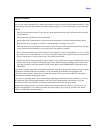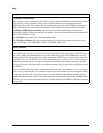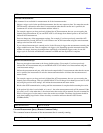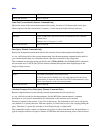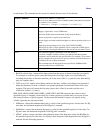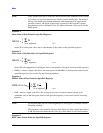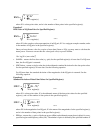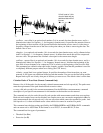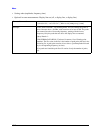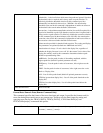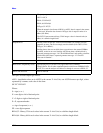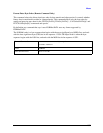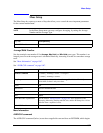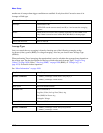
1041
Meas
<soffset> - start offset is an optional real number. (It is in seconds for time-domain traces, and is a
dimensionless index 0 to Npoints – 1, for frequency-domain traces). It specifies the amount of data at
the beginning of the trace that will be ignored before the decimation process starts. It is the time or
frequency change from the start of the trace to the point where you want to start using the data. The
default value is zero.
<length> - is an optional real number. (It is in seconds for time-domain traces, and is a dimensionless
index 0 to Npoints – 1, for frequency-domain traces). It defines how much data will be compressed
into one value. This parameter has a default value equal to the current trace length.
<roffset> - repeat offset is an optional real number. (It is in seconds for time-domain traces, and is a
dimensionless index 0 to Npoints – 1, for frequency-domain traces). It defines the beginning of the
next field of trace elements to be compressed. This is relative to the beginning of the previous field.
This parameter has a default value equal to the <length> variable. Note that this parameter is used for
a completely different purpose when curve fitting (see CFIT above).
<rlimit> - repeat limit is an optional integer. It specifies the number of data items that you want
returned. It will ignore any additional items beyond that number. You can use the Start offset and the
Repeat limit to pick out exactly what part of the data you want to use. The default value is all the data.
Calculate Peaks of Trace Data (Remote Command Only)
Returns a list of all the peaks for the currently selected measurement and sub-opcode [n]. The peaks must
meet the requirements of the peak threshold and excursion values.
n = any valid sub-opcode for the current measurement. See the MEASure:<measurement> command
description of your specific measurement for information on the data that can be returned.
The command can only be used with specific sub-opcodes with measurement results that are trace data.
Both real and complex traces can be searched, but complex traces are converted to magnitude in dBm. In
many measurements the sub-opcode n=0, is the raw trace data which cannot be searched for peaks. And
Sub-opcode n=1, is often calculated results values which also cannot be searched for peaks.
This command uses the data setting specified by the FORMat:BORDer and FORMat:DATA commands
and can return real or ASCII data. If the format is set to INT,32, it returns REAL,32 data.
The command has four types of parameters:
• Threshold (in dBm)
• Excursion (in dB)
t
0
soffset
length
roffset
If rlimit is set to 3, this
chunk of data and any
additional data will be
ignored.
vsd30



